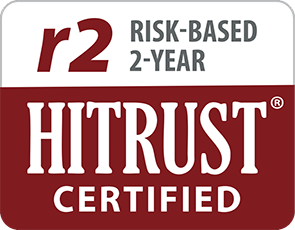Written by Shannon,
Brightside Health
8 Minute Read

Medically reviewed by:
Erin O'Callaghan, PHD
Director of Therapy
10 Minute Read

*Content warning: This article mentions childhood neglect and abuse.
Everyone feels nervous or worried out every now and again, but for people with Generalized Anxiety Disorder (GAD), these feelings are persistent, excessive, and have an impact on daily life.
If a person feels extremely worried or scared consistently, even if there is little or nothing to be worried about, it may be a sign of GAD.
If you feel like you may be experiencing generalized anxiety disorder there is hope. Anxiety disorders are the most common mental disorders in America, and there are numerous scientifically-proven treatment options like medication and/or therapy that can help you feel better soon.
Symptoms of Generalized Anxiety Disorder
GAD can develop in childhood, or adolescence, but symptoms can present themselves at any time. While some of the signs of GAD are similar to other anxiety disorders like panic disorder or obsessive-compulsive disorder, these are different conditions, and it’s important to seek professional help to understand what is going on.
Symptoms of GAD include:
- Persistent worry or anxiety about everyday occurrences, often to an irrational degree
- Overthinking plans and solutions
- Consistently visualizing worst-case scenarios
- Difficulty controlling feelings of worry
- Perceiving situations as threatening, even when they are not
- Inability to let go of worry or dread
- Feeling restless or on edge
- Difficulty handling uncertain or novel situations
- Having a sense of impending danger
- Increased irritability
There are also some physical ways that GAD may present itself. Physical symptoms of GAD include:
- Hyperventilation (rapid breathing)
- Rapid heart rate or higher blood pressure
- Fatigue
- Gastrointestinal problems
- Trembling or shaking
- Difficulty sleeping
Causes of Generalized Anxiety Disorder
It’s not known for sure what causes anxiety disorders, but it’s likely to be a complex interaction between biological, genetic, and environmental factors. It should be noted that it is possible to have GAD without any of the risk factors listed below. However, the more risk factors you have, the more likely it may be that you develop GAD at some point.
Biological Risk Factors
The brain contains chemicals called neurotransmitters that relay information back and forth to convey emotion and help people respond appropriately to stimuli. Serotonin and dopamine are two of these neurotransmitters that are essential in making you feel balanced and happy.
When these become disrupted, feelings of dread, anxiety, worry, or depression may present themselves. It’s believed that people with GAD have a chemical imbalance of these neurotransmitters in their brains.
Not to mention, having a family history of anxiety or related mental disorders can put people at a higher disposition for developing it in the future.
Environmental Factors
A history of stressful life events, especially as a child, may also put individuals at a higher risk for developing anxiety disorders. Experiencing a traumatic event, growing up poor or oppressed, going through divorce or separation, and childhood abuse or neglect are all risk factors for developing GAD.
Also, anxiety may even be learned by children who are around family members that are noticeably stressed or anxious around a child. For example, a child whose parent displays anxious tendencies may grow up to become anxious as well.
Understanding Anxiety: The Fight or Flight Response
Everyone is born with an instinctive stress response often referred to as “fight or flight.” When confronted with danger, your body releases a rush of endorphins and often produces an increase in heart rate and breathing while decreasing your digestive activity (so you don’t feel hungry). This is all meant to prepare you to fight confrontation head-on, or run away from danger.
The stress response is useful and necessary in actually threatening situations. For example, if a wild animal begins to chase you, having the increased heart rate and breathing may help you run faster and for a longer distance, which can ultimately save your life.
However, people with generalized anxiety disorder initiate a similar response in situations that are not life-threatening at all. Not only does this lead to feelings of intense worry and dread, but it can lead to physical symptoms like high blood pressure and increased heart rate. If left untreated, these symptoms can develop into a more serious condition.
The good news is that anxiety is one of the most treatable mental conditions, and there are plenty of options at your disposal.
Related Disorders
Often, generalized anxiety can co-occur with disorders like PTSD or depression, and is interrelated with these disorders in many ways.
For example, someone with GAD is also more likely to have depression or another anxiety disorder like Social Anxiety Disorder or Panic Disorder.
This is where a transdiagnostic approach to understanding mental health disorders can be helpful, as being able to identify and treat symptoms that span across more than one traditional diagnostic border can be the factor that puts someone on the right treatment path.
How to Treat Generalized Anxiety Disorder
Generalized anxiety disorder is highly treatable, and many individuals who undergo some form of treatment see improvement in just a few weeks.
While there are several different treatment methods for anxiety, here are some of the most common and effective.
Therapy
Cognitive-behavioral therapy, or CBT, is the most scientifically-proven form of therapy to treat anxiety. CBT is a short-term, structured, and goal-oriented form of therapy that focuses on helping individuals change unhelpful ways of thinking and to develop positive coping skills. It often involves recognizing irrational thoughts and re-evaluating them in context and using problem-solving skills to cope with difficult situations.
Therapy doesn’t need to be a long-term commitment, but it does work best when you are ready to commit to engaging in treatment with your therapist, which will involve applying what you learn in therapy in your everyday life.
When you’re ready, click here to learn more about how virtual CBT-based therapy can get you back on track.
Medication
Another effective method to relieve anxiety is using medication. Anxiety disorders can often be treated using antidepressants. The word antidepressant is a misnomer, as it can actually be used to treat many different mental health conditions.
A class of antidepressants known as SSRIs (Selective Serotonin Reuptake Inhibitor) work by preventing serotonin from being reabsorbed by neurons in the brain, therefore increasing its abundance. People with anxiety often have lower levels of serotonin, so this can help to rebalance the chemical equilibrium.
There are a lot of misconceptions about antidepressants, with the main one being that it will change your personality. It’s important to remember that antidepressants don’t change any of the amazing things about you — they just help reduce some of the things weighing you down.
Common antidepressants used for GAD:
- Clonazepam (Klonopin)
- Lorazepam (Ativan)
- Duloxetine (Cymbalta)
- Fluoxetine (Prozac )
- Venlafaxine (Effexor)
- Paroxetine (Paxil)
- Sertraline (Zoloft)
Keep in mind that these medications can all be dangerous if mixed with alcohol and may make you dependent upon sedative-hypnotic medications if used on an ongoing basis. Side effects of antidepressants that treat GAD vary by specific drug and the person taking them
Combination Treatment
While therapy and medication are effective on their own, a combination treatment plan that uses both methods is the most successful. People who use medication and therapy together have up to a 60% better chance at recovery compared to just one treatment alone.
Combination treatments are comprehensive, helping you develop new skills to deal with anxiety-inducing situations while simultaneously restoring balance to your internal biology.
In Summary
Generalized anxiety disorder is among the most common mental disorders throughout the adult population in the U.S. Everyone feels anxious every now and then, but GAD is characterized by persistent and overwhelming feelings of worry or fear in situations that may not warrant those same feelings.
It’s not yet known what exactly causes GAD, but it’s likely to be a mix of biological and environmental factors like family history, past traumas, or chemical imbalance of serotonin. Untreated anxiety can cause physical health problems, as the frequent activation of the stress response can lead to hypertension and other heart conditions.
The good news about GAD is that it is highly treatable. Cognitive behavioral therapy and antidepressant medications both work to reduce anxiety symptoms. And a combination treatment that uses both is even more effective.
When you’re ready to take the next step towards improving your mental health, Brightside is by your side every step of the way. Licensed psychiatric providers and therapists will create a comprehensive treatment plan to get you back on track, right from the comfort of home.
Click here to start your free assessment to get mental health treatment that’s just right.
Sources:
What Are Anxiety Disorders | Psychiatry.org
Family History of Psychological Problems in Generalized Anxiety Disorder | NCBI
Generalized Anxiety Disorder (GAD) | Children’s Hospital Network


















